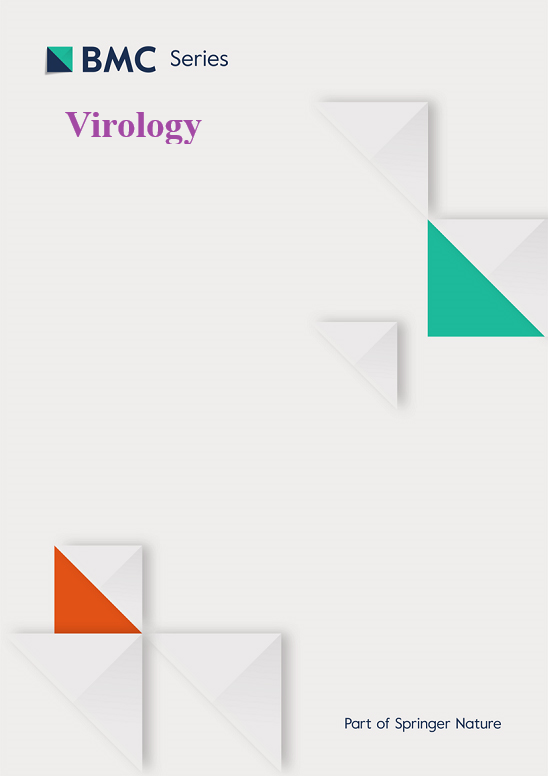体外培养原代肺泡巨噬细胞增殖中华Trionyx出血热综合征病毒
IF 2.8
3区 医学
Q3 VIROLOGY
引用次数: 0
摘要
中华鳖腮腺炎表现为细菌或病毒感染。病毒性腮腺炎往往导致快速死亡,对中华绒螯蟹养殖业构成重大威胁。病毒性腮腺炎的病原是中华乳杆菌出血性综合征病毒(TSHSV)。然而,由于缺乏敏感细胞,对这种病毒进行全面研究具有挑战性。本研究从中华按蚊幼体肺组织中分离原代巨噬细胞,建立TSHSV体外增殖方法。采用灌洗法分离巨噬细胞。将这些细胞培养于添加25%胎牛血清、100 U/mL青霉素和100 μg/mL链霉素的M199培养基中,在5% CO2培养箱中30℃培养。巨噬细胞最初是通过形态学观察和酸性磷酸酶测定来区分的。本研究通过观察巨噬细胞感染TSHSV后的变化,采用RT-qPCR、免疫荧光和免疫组织化学技术评价巨噬细胞对TSHSV的敏感性。结果表明,从肺中冲洗出来的细胞主要被鉴定为肺泡巨噬细胞。感染TSHSV后,观察到细胞病变效应。感染细胞中检测到病毒核酸片段,抗病毒免疫相关基因Mx1、OASL、RSAD2表达显著上调。此外,在感染的巨噬细胞内大量表达病毒蛋白,表明病毒复制。本研究结果表明,建立的分离培养海龟原代肺泡巨噬细胞的方法可用于体外培养TSHSV。本文章由计算机程序翻译,如有差异,请以英文原文为准。
Proliferation of Trionyx sinensis hemorrhagic syndrome virus using primary alveolar macrophages in vitro
Trionyx Sinensis (Chinese soft-shelled turtle) parotitis manifests as bacterial or viral infections. Viral parotitis often leads to rapid mortality, posing a significant threat to the T. sinensis aquaculture industry. The causative agent of viral parotitis is T. sinensis Hemorrhagic Syndrome Virus (TSHSV). However, due to the lack of sensitive cells, conducting comprehensive studies on this virus is challenging. In this study, primary macrophages were isolated from the lung tissue of juvenile T. sinensis to establish a method for TSHSV proliferation in vitro. Macrophages were isolated using irrigation method. These cells were cultured in M199 medium supplemented with 25 % fetal bovine serum, 100 U/mL penicillin, and 100 μg/mL streptomycin, and incubated at 30 °C in a 5 % CO2 incubator. Macrophages were initially distinguished through morphological observation and an acidic phosphatase assay. In this study, the changes were observed in macrophages infected with TSHSV, and then RT-qPCR, immunofluorescence, and immunohistochemistry techniques were used to evaluate the sensitivity of macrophages for TSHSV. The results demonstrated that the cells washed out from the lung were predominantly identified as alveolar macrophages. After infection with TSHSV, cytopathic effects were observed. Viral nucleic acid segments could be detected in the infected cells, and the expression of antiviral immune-related genes Mx1, OASL, and RSAD2 was significantly upregulated. Moreover, a large amount of viral protein was expressed within the infected macrophages, indicating viral replication. Our results suggested that the developed approach for isolating and culturing primary alveolar macrophages of turtles can be employed for in vitro cultivation of TSHSV.
求助全文
通过发布文献求助,成功后即可免费获取论文全文。
去求助
来源期刊

Virology
医学-病毒学
CiteScore
6.00
自引率
0.00%
发文量
157
审稿时长
50 days
期刊介绍:
Launched in 1955, Virology is a broad and inclusive journal that welcomes submissions on all aspects of virology including plant, animal, microbial and human viruses. The journal publishes basic research as well as pre-clinical and clinical studies of vaccines, anti-viral drugs and their development, anti-viral therapies, and computational studies of virus infections. Any submission that is of broad interest to the community of virologists/vaccinologists and reporting scientifically accurate and valuable research will be considered for publication, including negative findings and multidisciplinary work.Virology is open to reviews, research manuscripts, short communication, registered reports as well as follow-up manuscripts.
 求助内容:
求助内容: 应助结果提醒方式:
应助结果提醒方式:


